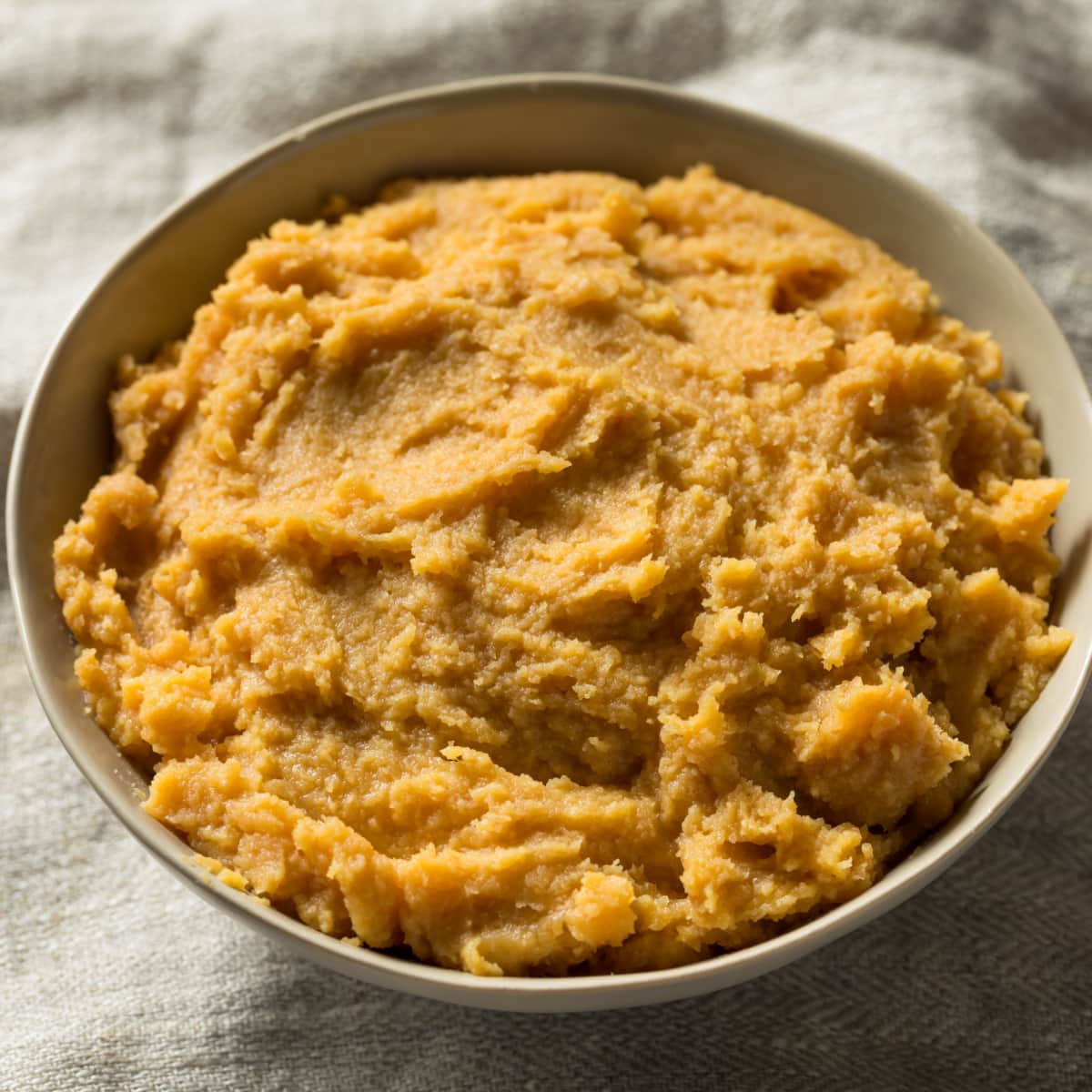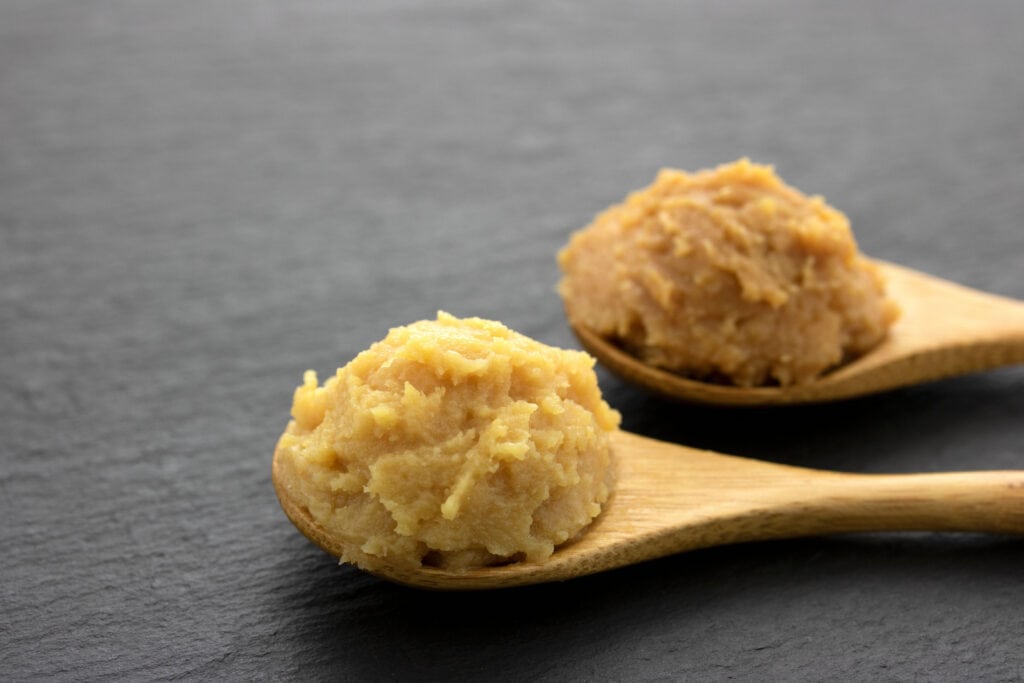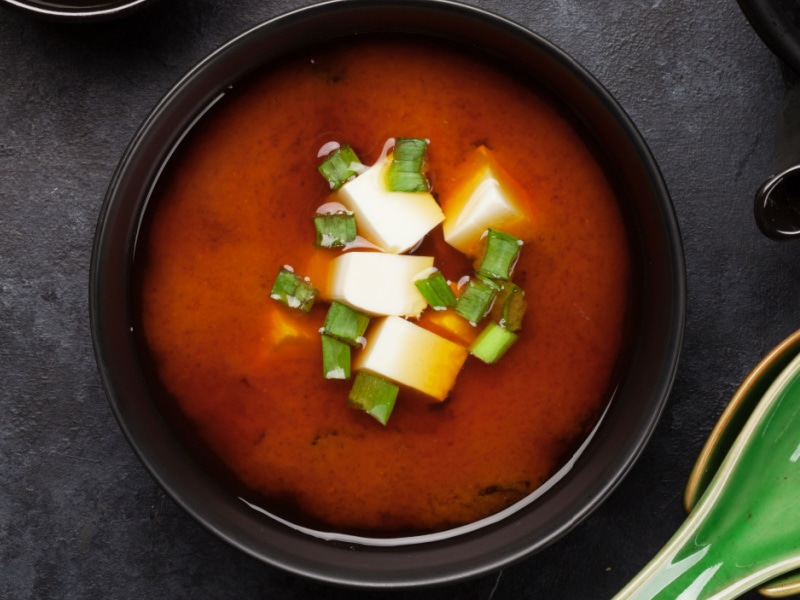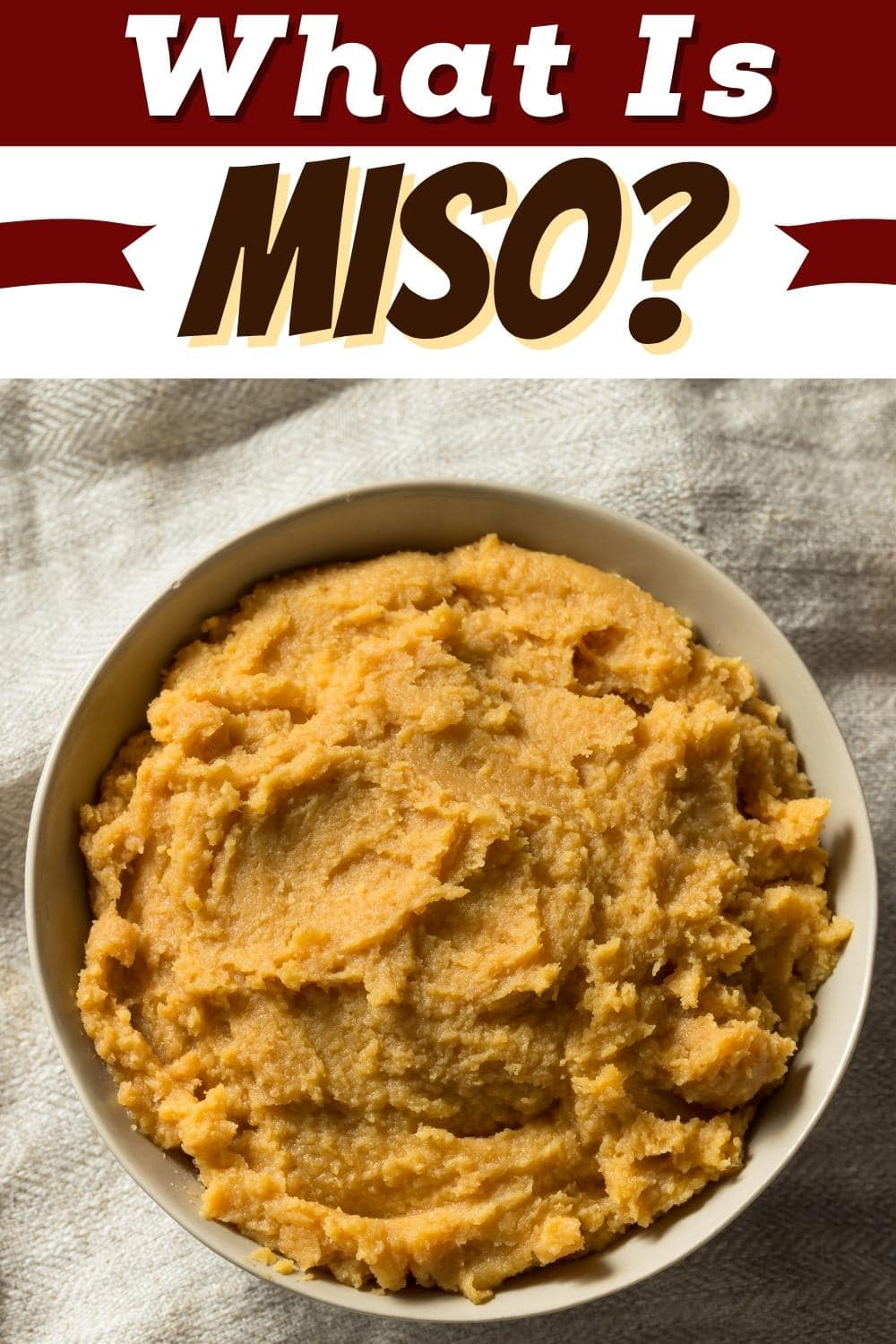Despite it being common in many restaurants, you may be wondering, “What is miso?”
Miso paste, soybean paste, red, yellow, or brown. Japanese miso may come with many names but it’s delicious either way.

In today’s culinary world, it’s used in many different cuisines. It’s even used as a “secret ingredient” in sauces or desserts.
Use it to add saltiness, earthy umami, or richer flavors to any dish.
Let’s dive into everything you need and want to know about miso paste.
What Is Miso?
The very basic description of miso is a fermented soybean paste.
However, there’s a lot more that goes into this funky ingredient.
Miso also includes a type of mold that comes from rice, barley, or soybeans.
It’s called koji or Aspergillus oryzae. Over time, the enzymes in the koji break down the structure of the beans and grains.
This fermentation process can take weeks or even years.
Once fermentation is complete, the soybeans will be broken down into amino acids, simple sugars, and fatty acids.
Miso used to be regulated in Japan and its usage goes back millennia.
Traditional miso making is even considered an art form.
About 95% of miso made in the U.S. is kome-miso.
It’s made from soybeans and rice koji. There are many other types of miso that differ in flavor, color, and aroma.
The end result of miso depends on many factors.
Where it’s made, the soybean to koji proportions, and fermentation time all affect the miso.
There are other types of miso including mugi-miso made from soybeans and barley.
You might also find mame-miso, which is made with just soybeans.

How Is Miso Made?
So what is the process of this art form of miso making?
First, soybeans are thoroughly soaked in water. They sit for about 15 hours to ensure they’re completely soaked.
After that, they’re steamed, mashed, and cooled to about 86º Fahrenheit.
The mashed soybeans are combined with koji, salt, and warm soy water.
Using the leftover water from the steaming process will help keep some of the flavor.
Mixing these ingredients together will create a soybean paste with a dough-like texture. It gets formed into small mango-sized balls.
The soybean paste ball is then placed into an airtight fermenting container.
The filled container gets a spritz of alcohol to prevent mold and then it’s left to ferment.
Fermentation time depends on when it is made. It takes about 3 months in the summer or 6 to 12 months in the winter.
Types of Miso
There are many different types of miso and they’re all categorized by their base ingredient.
They’re typically categorized as light or dark. They’re further labeled as yellow, white, or red miso.
In Japan, miso is also categorized by where it’s made.
Shinshu-miso, Kaga-miso, Sendai-miso, and Saikyo-miso are just a few different types made throughout Japan.
As a rule of thumb, dark miso will have a much bolder taste than light miso. Light miso includes white or yellow varieties.
White miso is also called shiro miso. It’s made with a large amount of rice koji in comparison to soybeans.
It’s fermented for a relatively short amount of time. White miso has a mild flavor and a hint of sweetness.
This makes it a great choice if you’re new to using miso paste.
White miso is fantastic for miso soup, hot pots, marinades, and dressings.
Yellow miso is called shinshu miso and is made with soybeans and barley koji. It occasionally has a bit of fermented rice as well.
Yellow miso is fermented a bit longer than white miso.
The color ranges from yellow to light brown and it has an earthy umami flavor.
Yellow miso adds a delicious earthiness to any dish. It’s great for marinades, soups, dips, and sauces.
Dark miso can be found with a red or brown color. The flavors tend to be deeper and richer than light miso.
Red miso, also known as aka miso, is made with soybeans and a high concentration of barley koji.
It’s fermented longer than white miso which is one of the reasons for the darker color.
Red miso has a nutty umami flavor. It also tends to be the saltiest of all miso pastes.
Red miso is best for hearty dishes like braises, stews, meat marinades, and rich soups.

How to Use Miso
Miso is used for many popular and traditional recipes. It is an easy way to add lots of rich flavor.
One of the most common uses for miso paste is miso soup.
It’s a classic Japanese soup that is typically made with both brown and white miso.
It’s perfectly balanced with the right amount of sweet and savory flavors.
Miso dressings are another fantastic way to use miso paste.
With just a few other simple ingredients like sugar, soy sauce, and vinegar, they’re easy to make. Add it to leafy greens or use it as a dip.
You can also use miso in a soy sauce glaze and spread it on salmon.
Miso also works in surprising ways to make so many dishes delicious.
Use it in combination with nutritional yeast to make vegan mac and cheese taste cheesy.
It also works wonders in a fudgy brownie. Mild white miso adds a balanced flavor that is out of this world.
Miso paste is the ultimate addition to almost any recipe.
Where to Buy Miso
Miso can often be found in regular grocery stores, specialty stores, or Asian markets.
It might be labeled as miso paste or soybean paste. It may be found in plastic tubs or jars.
It can also sometimes be found in the refrigerator section. Look for plastic tubs stored near the tofu.
When shopping for miso, you’ll also want to look at the ingredients. A short ingredient list is always best.
Try to stay away from too many added ingredients or preservatives.
I suggest shopping for a variety of miso pastes as well.
Dark and light miso pastes will each taste different in your recipes.
How to Store Miso
Since miso is a fermented product, it lasts a very long time.
With proper storage, most miso will stay good indefinitely.
It’s worth noting that light miso doesn’t have as long of a shelf life as dark miso.
Since the fermentation process is shorter, it’s best if used within one year.
Keep miso paste in an airtight container in the refrigerator.
It might get darker or change color slightly over time but that doesn’t affect the flavor.
You can also store miso paste in the freezer.










